.png)







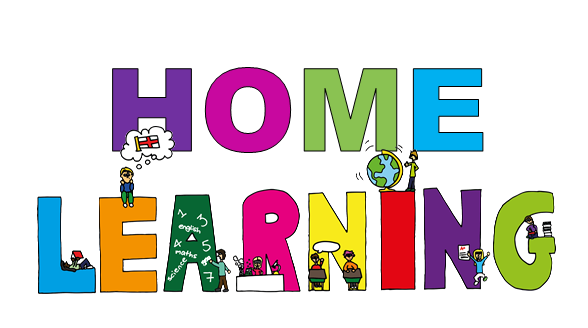
Primary 2
Home Learning Activities – 15th June 2020
|
Story of the week
Somebody Loves You, Mr. Hatch
Somebody Loves You Mr. Hatch. YouTube Link
|
|
Spelling sound – ck
- Lock
- Luck
- Pick
- Sick
- Rock
- Grid activity: draw a picture of each word and write it in a sentence. Challenge – add some bling to your sentences (adjectives, time words, connectives).
- Real and read game. Take turns rolling a dice and reding a word from that number’s row. The first player to read and mark off 4 words in a row wins. (To play on a phone or tablet, save the picture, press edit and colour the words)
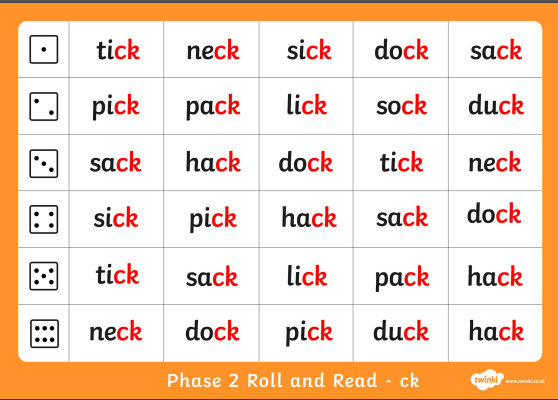
- Active spelling activities

|
- Predict: before you read the book, predict what you think will happen in the book. Write it down or tell your family. Remember to explain why you think something, use the words “I think _____________ because”
- Make up your own questions. Try making up your own true, false or can’t tell questions about the story and quiz your family.
|
|
- Write a review: write your opinion of the story. *Remember to explain why you think something using the word because.
I liked the book because ___________________________.
- Write a summary: tell us what happens at the start, middle and end of the story? Remember summaries must be short and only talk about the really important events.
|
|
Arts
- Act out the story of ‘Somebody Loves You Mr. Hatch’. Get your family involved and act it out.
- Make some heart themed craft.
Draw a Cartoon Heart. YouTube Link
Paper Heart Craft. YouTube Link
|
|
Health and Wellbeing
- Think about all the people you love and who love ypu. This can include your family, friends at school, friends you go to clubs with, neighbors, anyone you can think of. Remember some of the good memories you have with this person. Why not draw a picture, create something special or do something special for those people.
|
|
- Counting. Watch these videos and practice counting to 100 and back from 100.
Count to 100. Jack Hartmann
Count backwards from 100. Jack Hartmann
- Skip counting. Watch these videos are practice skip counting in 2s, 4s, 5,s and 10s.
Skip counting in 2s. Jack Hartmann
Skip counting in 5s. Jack Hartmann
Skip counting in 10s. Jack Hartmann
Skip counting in 3s. Jack Hartmann
- Create arrays. Last week, you will have practiced counting arrays. This week try having pupils create their own arrays. Use the example below to get you started and make an array of marshmallows in real life, so for the first one pupils will make 3 rows of 4. Remind pupils it doesn’t matter whether the rows are 3x4 or 4x3 because the totals remain the same. After, you can use any material in the house and have pupils make arrays with them.
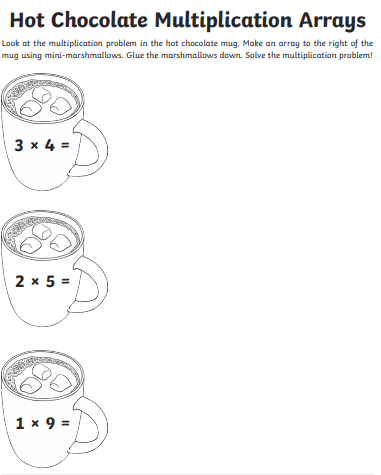
|
Home Learning Activities – 8th June 2020
|
Story of the week
The Empty Pot
The Empty Pot. YouTube Link
|
|
Spelling sound – ow (how)
- How
- Now
- Cow
- Down
- Owl
- Grid activity: draw a picture of each word and write it in a sentence. Challenge – add some bling to your sentences (adjectives, time words, connectives).
- Real and read game. Take turns rolling a dice and reding a word from that number’s row. The first player to read and mark off 4 words in a row wins. (To play on a phone or tablet, save the picture, press edit and colour the words)
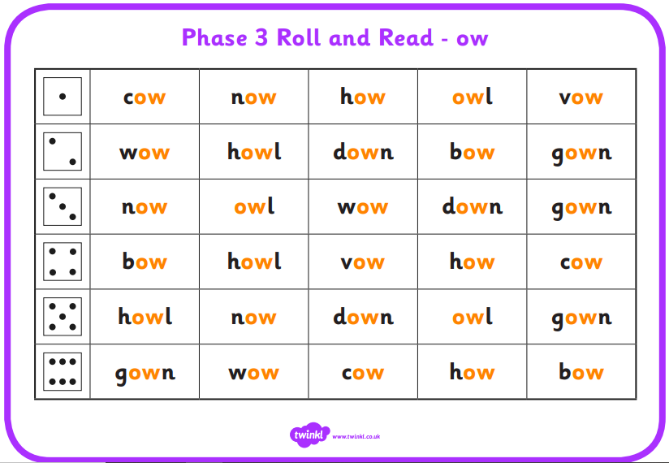
- Active spelling activities

|
- Predict: before you read the book, predict what you think will happen in the book. Write it down or tell your family. Remember to explain why you think something, use the words “I think _____________ because”
- Make up your own questions. Try making open questions that can have any answer, or closed questions that can only be answered with a yes or no.
|
|
- Write a review: write your opinion of the story. *Remember to explain why you think something using the word because.
I liked the book because ___________________________.
- Write a summary: tell us what happens at the start, middle and end of the story? Remember summaries must be short and only talk about the really important events.
|
|
Arts
- Act out the story of ‘The Empty Pot’. Get your family involved and act it out.
- Draw some flowers. Follow the links below that teaches you how to draw different kinds of flowers. Or, take your paper and pencil outside and draw flowers that you see.
Draw a Tulip in a Pot. Tutorial
Draw a Sunflower. Tutorial
Draw a Rose. Tutorial
Draw a Daisy. Tutorial
|
|
Health and Wellbeing
- What lesson do you think the story is trying to teach us? Stories can help teach us lots of different things. For example, remember when we read the Rainbow fish and it taught us to be kind to others and share what we have. What do you think this story taught us?
- Think about some of your favourite stories. Do you think they teach us good messages too?
- Try to grow your own flowers. With an adult, try growing flowers at home.
- Learn about the different types of flowers there are and name them. Why not go on a walk and try to name all of the flowers you see along the way!
|
|
- Counting. Watch these videos and practice counting to 100 and back from 100.
Count to 100. Jack Hartmann
Count backwards from 100. Jack Hartmann
- Skip counting. Watch these videos are practice skip counting in 2s, 4s, 5,s and 10s.
Skip counting in 2s. Jack Hartmann
Skip counting in 5s. Jack Hartmann
Skip counting in 10s. Jack Hartmann
Skip counting in 3s. Jack Hartmann
- Counting using arrays. Watch the video below to show pupils how to count using arrays. Counting Using Arrays. Pupils should see that counting using arrays will help them count amounts faster using repeated addition. They should also see that they can use two numbers to repeatedly add and the answer will stay the same. Whether its 6 rows of 4 or 4 rows of 6.
- Worksheets. Have pupils count the arrays using repeated addition. They can write the total or as a challenge, have pupils write a number sentence e.g. for the first question, pupils can write the number sentence 3+3+3+3=12 or 4+4+4=12.

|
Home Learning Activities – 1st June 2020
|
Story of the week
Trombone Shorty
Trombone Shorty. YouTube Link
|
|
Spelling sound – ow (snow)
- Low
- Blow
- Slow
- Glow
- Throw
- Grid activity: draw a picture of each word and write it in a sentence. Challenge – add some bling to your sentences (adjectives, time words, connectives).
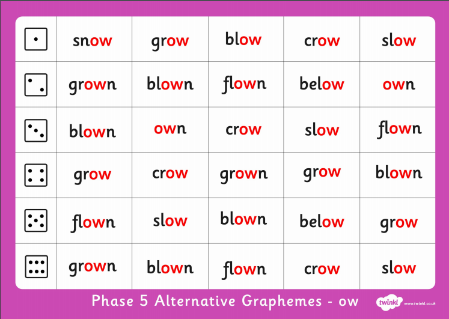
- Real and read game. Take turns rolling a dice and reding a word from that number’s row. The first player to read and mark off 4 words in a row wins. (To play on a phone or tablet, save the picture, press edit and colour the words)
- Active spelling activities

|
- Predict: before you read the book, predict what you think will happen in the book. Write it down or tell your family. Remember to explain why you think something, use the words “I think ___________________________ because”
- Make up your own questions. Try making open questions that can have any answer, or closed questions that can only be answered with a yes or no.
|
|
- Write a review: write your opinion of the story. *Remember to explain why you think something using the word because.
I liked the book because ___________________________.
- Write a summary: tell us what happens at the start, middle and end of the story? Remember summaries must be short and only talk about the really important events.
- Write a story about what happens after Trombone Shorty and his band leave New Orleans to play music across the world? Remember it should have a beginning, middle where a problem or something exciting happens, then an end that solves the problem or says what he characters do last.
|
|
Arts
- Act out the story of ‘Trombone Shorty’. Make up your own pretend instruments and get your family involved to act it out. Take a video of you acting the story out.
- Create your own instruments and songs at home. Follow the link below to get ideas on how to make some simple instruments. Remember to take pictures of your instruments and videos of any songs you do and send them to the school twitter page. We would love to see them!
Making Simple Instruments at Home. YouTube Link
- Learn to play an instrument. Learn how to play a real instrument if you have one at home.
- Ask your family who their favourite musical artists are? Listen to their songs and see if you like them too!
- Listen and sing along to some of your favourite singers. Send the school a video of you singing along!
- Do a fun interactive music lesson online. Remember parents to join in!
Interactive Music Class - Fun on the Farm
Children's interactive music video - Shakey egg train ride!
Children's interactive music warm up
|
|
Health and Wellbeing
- Think about songs that make you feel happy. Remember these and try listening to them when you are sad to cheer up. Follow the link to a playlist of upbeat songs to get you started.
Top 100 Kids Disco Party Songs
- Think about what songs make you feel different emptions than happy. What is it about songs that can make people feel different emotions?
|
|
- Counting. Watch these videos and practice counting to 100 and back from 100.
Count to 100. Jack Hartmann
Count backwards from 100. Jack Hartmann
- Skip counting. Watch these videos are practice skip counting in 2s, 4s, 5,s and 10s.
Skip counting in 2s. Jack Hartmann
Skip counting in 5s. Jack Hartmann
Skip counting in 10s. Jack Hartmann
Skip counting in 3s. Jack Hartmann
- Making equal groups. Use different materials around your house and ask your children to share them equally between you. For example, have them share 10 grapes between you and them or 25 Lego pieces between 5 people. Try and do amounts that can be shared equally.
- Have a go at putting these into sentences e.g. 10 shared equally between 2 is 5.
- As a challenge, introduce the division symbol as a way to swap out the words ‘shared equally’ e.g. 10 ÷ 2 = 5.
- Try the matching workshee
t below.
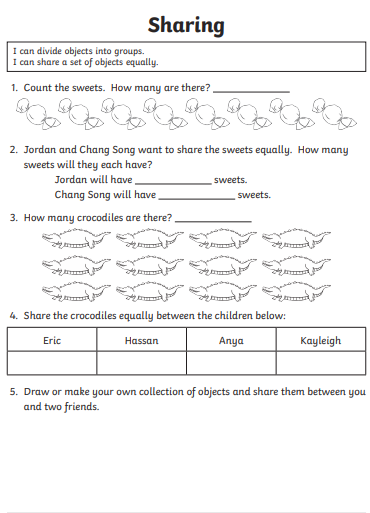
|
Home Learning Activities – 25th May 2020
|
Story of the week

When a Monster Moves In
When a Dragon Moves In. Online Link
|
|
Spelling sound – u magic e (when short vowel sound becomes a long vowel sound with addition of ‘e’ at the end of the word) e.g. cut + e ------> cute
- Cute
- Rude
- Rule
- Tune
- Cube
- Grid activity: draw a picture of each word and write it in a sentence. Challenge – add some bling to your sentences (adjectives, time words, connectives)
- Real and nonsense word colouring. Roll a dice and read all the words in that number’s row. Colour all the real words one colour and the nonsense words in a different colour. If you roll a number more than once, read the words again for more practice. (To play on a phone or tablet, save the picture, press edit and colour the words)
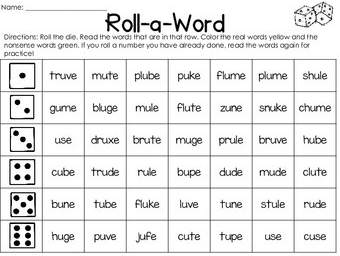
- Active spelling activities

|
- Predict: before you read the book, predict what you think will happen in the book. Write it down or tell your family. Remember to explain why you think something, use the words “I think ___________________________ because”
- Make up your own questions. Try making open questions that can have any answer, or closed questions that can only be answered with a yes or no.
|
|
- Write a review: write your opinion of the story. *Remember to explain why you think something using the word because.
I liked the book because ___________________________.
- Write a summary: tell us what happens at the start, middle and end of the story? Remember summaries must be short and only talk about the really important events.
- Write your own story about a dragon. Remember it should have a beginning, middle where a problem or something exciting happens, then an end that solves the problem or says what he characters do last.
- Create your own sand castle and dragon that lives in it. First draw a picture of the sand castle and monster. Then write about the sandcastle and monster giving as much detail as you can! What do they look like? What does the monster smell and feel like? Use lots of adjectives to describe them both.
Use the monster word mat from last week to help you describe your dragon.
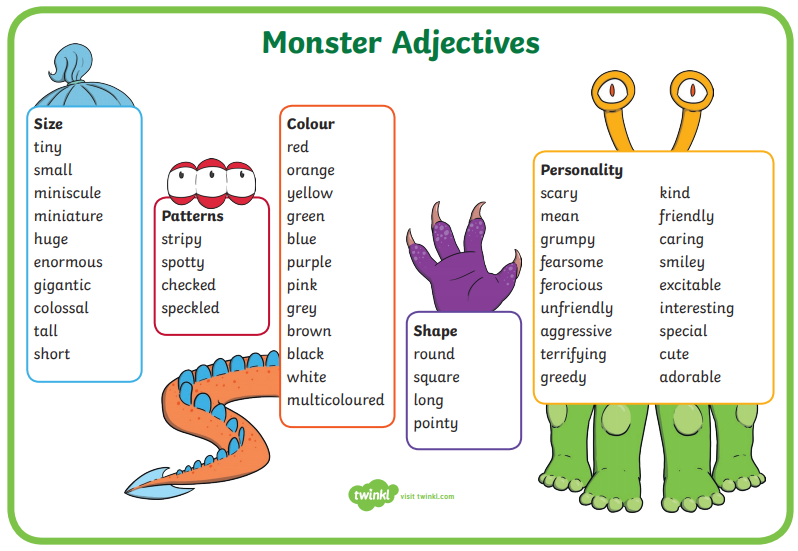
|
|
Arts
- Draw a dragon. Follow the link and copy the video on how to draw a dragon.
How to Draw a Dragon Tutorial. Easy
How to Draw a Dragon Tutorial. Hard
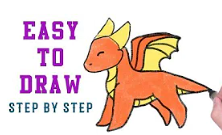
- Create a 3d model of your dragon. Use playdough or make your own playdough. Have a look at the pictures below for some inspiration!
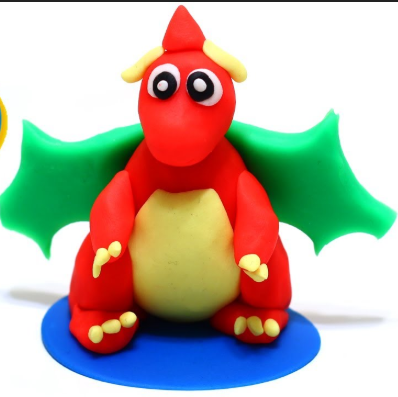
- Act out the story of ‘When a Monster Moves In’. Dress up like a monster and get your family involved to act it out. Take a video of you acting the story out.
|
|
Health and Wellbeing
- Write about how the different characters must have felt throughout the story. For example, Mum and Dad must have been confused when they heard about the dragon, or the boy was excited at the start.
|
|
- Counting. Watch these videos and practice counting to 100 and back from 100.
Count to 100. Jack Hartmann
Count backwards from 100. Jack Hartmann
- Skip counting. Watch these videos are practice skip counting in 2s, 4s, 5,s and 10s.
Skip counting in 2s. Jack Hartmann
Skip counting in 5s. Jack Hartmann
Skip counting in 10s. Jack Hartmann
Skip counting in 3s. Jack Hartmann
- Use repeated addition to find the total in the questions below. Count the ladybird spots by counting in 2s and flower petals by counting in 5s.
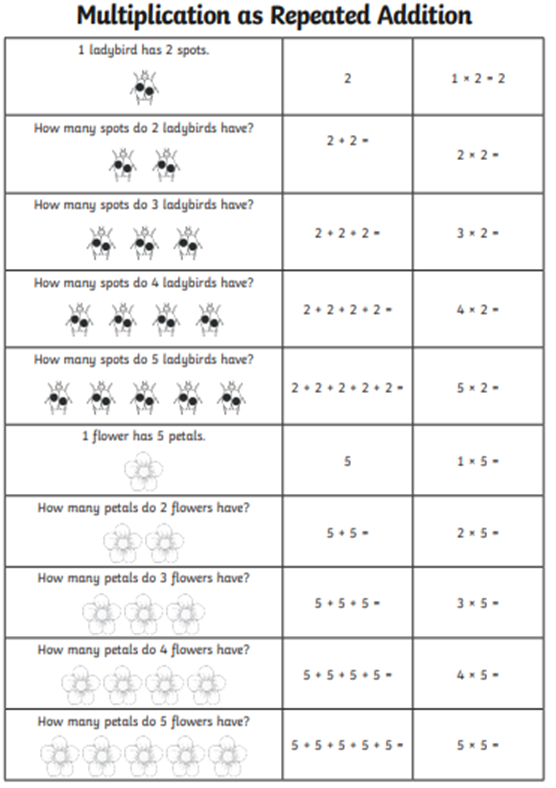
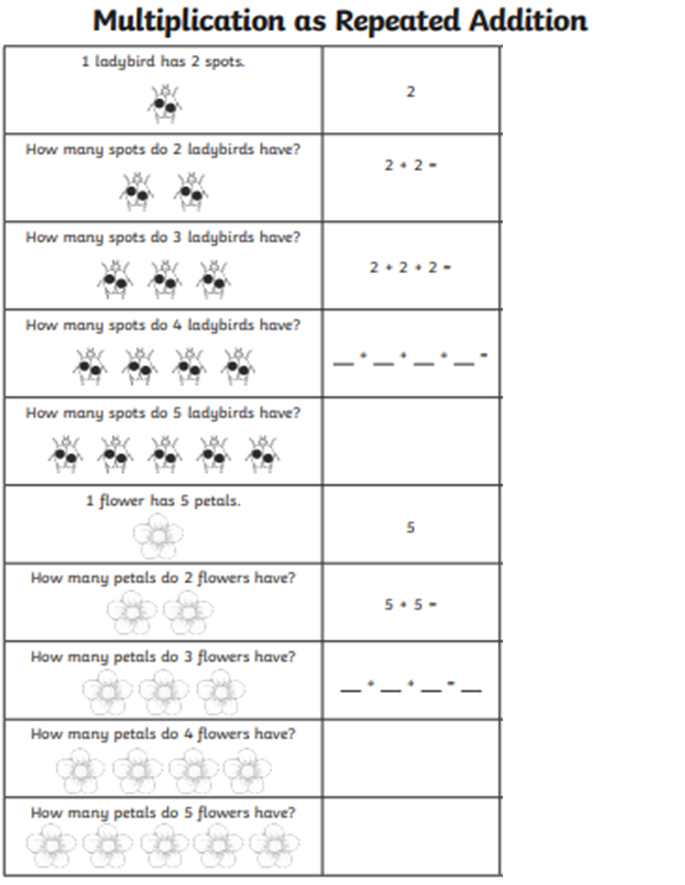
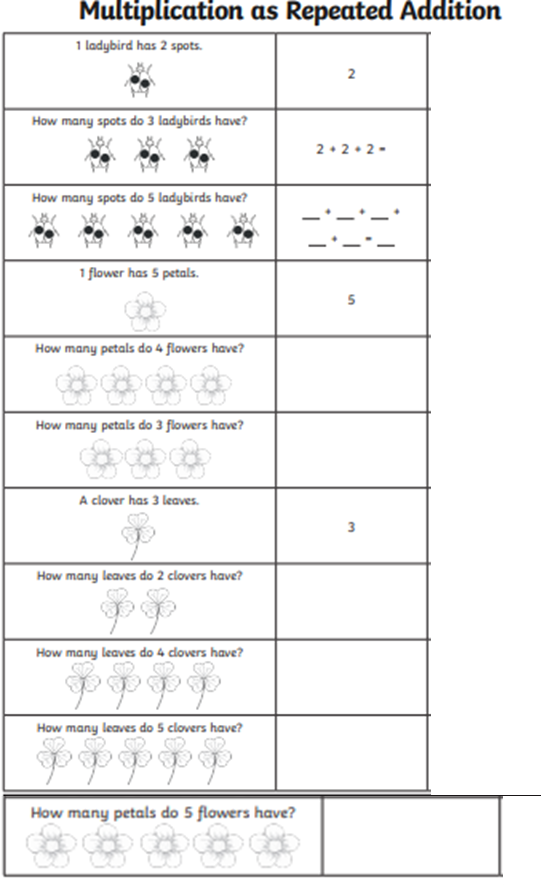
|
Monday 18th May
|
Story of the week
Hey That’s My Monster
Hey That's My Monster Story Online
|
|
Spelling sound – o magic e (when short vowel sound becomes a long vowel sound with addition of ‘e’ at the end of the word) e.g. hop + e ------> hope
- Hope
- Rope
- Note
- Code
- Pole
- Grid activity: draw a picture of each word and write it in a sentence. Challenge – add some bling to your sentences (adjectives, time words, connectives)
- Board game: take turns reading and marking an ‘o_e’ word. The first person to colour 4 words in a row wins. (To play on a phone or tablet, save the picture, press edit and colour the words to mark the turns)
- Active spelling activities
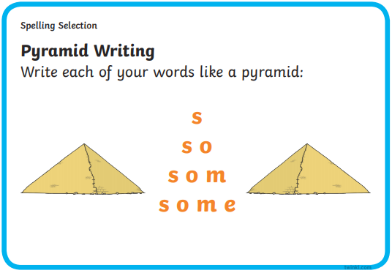 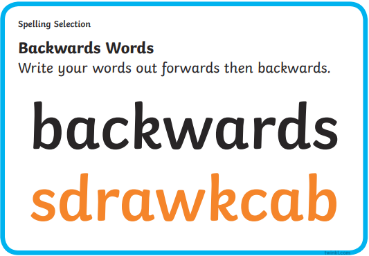 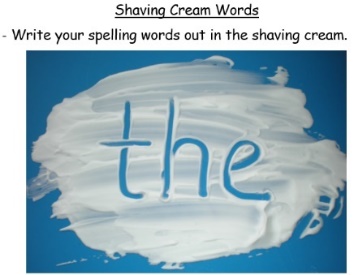
|
- Predict: before you read the book, predict what you think will happen in the book. Write it down or tell your family. Remember to explain why you think something, use the words “I think ___________________________ because”
- Make up your own questions. Try making open questions that can have any answer, or closed questions that can only be answered with a yes or no.
|
|
- Write a review: write your opinion of the story. *Remember to explain why you think something using the word because.
I liked the book because ___________________________.
- Write a summary: tell us what happens at the start, middle and end of the story? Remember summaries must be short and only talk about the really important events.
- Create and monster that lives under beds and write about it. What is the name of your monster? What does it look like? Is it a scary monster or nice monster? Draw a picture of it and write about it with as much detail as you can. Remember to share it with the school twitter account so we can see your hard work!
Use this word mat to help you describe the monster.
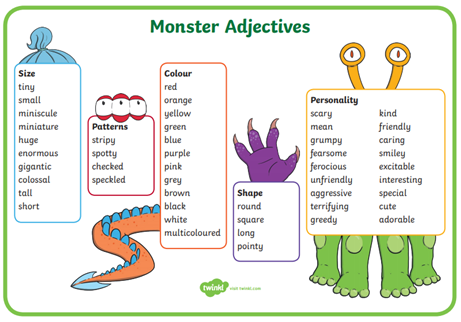
|
|
Arts
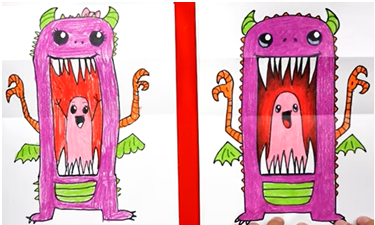
- Create a 3d model of a monster. Use playdough or make your own playdough.
Here are some pictures to give you inspiration.
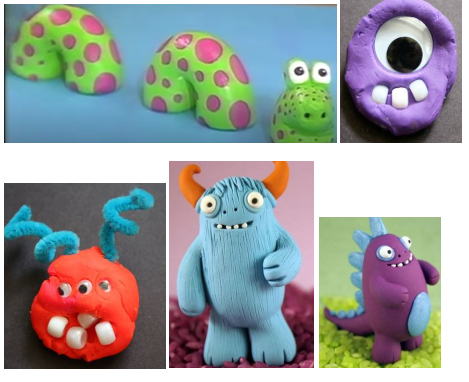
- Create some monster arts and crafts. Follow the link to the video that shows you some monster crafts or make your own. Monster Crafts for Kids
Here are some pictures to give you inspiration.
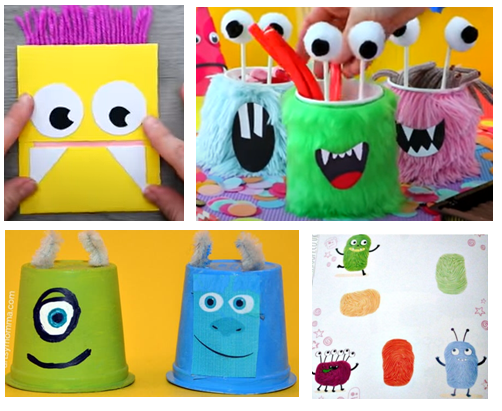
- Act out the story of ‘Hey That’s My Monster’. Dress up like a monster and get your family involved to act it out. Take a video of you acting the story out.
|
|
Health and Wellbeing
- Make some monster treats! Here are pictures of some to give you inspiration. Try to use as many healthy ingredients as possible. Use kebab sticks and ingredients like Nutella and peanut butter to stick ingredients together.

- Write recipes for any monster treats that you make.
|
|
- Counting. Watch these videos and practice counting to 100 and back from 100.
Count to 100. Jack Hartmann
Count backwards from 100. Jack Hartmann
- Skip counting. Watch these videos are practice skip counting in 2s, 4s, 5,s and 10s.
Skip counting in 2s. Jack Hartmann
Skip counting in 5s. Jack Hartmann
Skip counting in 10s. Jack Hartmann
Skip counting in 3s. Jack Hartmann
- Fill in the blanks in the number sentences. Remember to use real objects to help you count or a hundred square.
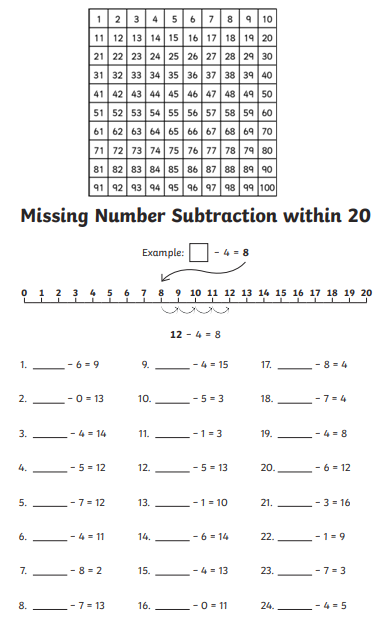
|
Home Learning Activities – 11th May 2020
|
Story of the week
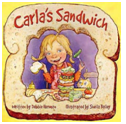
Carla’s Sandwich
|
|
Spelling sound – i magic e (when short vowel sound becomes a long vowel sound with addition of ‘e’ at the end of the word)
- like
- bike
- kite
- bite
- line
- Grid activity: draw a picture of each word and write it in a sentence. Challenge – add some bling to your sentences (adjectives, time words, connectives)
- Board game: take turns reading and marking an ‘i_e’ word. The first person to colour 4 words in a row wins. (To play on a phone or tablet, save the picture, press edit and colour the words to mark the turns)
- Active spelling activities
 

|
- Predict: before you read the book, predict what you think will happen in the book. Write it down or tell your family. Remember to explain why you think something, use the words “I think ___________________________ because”
- Quiz. Test how well you can remember facts about the story and play the quiz online.
https://quizizz.com/join/quiz/5eb52e2a1759a0001cfb86ec/start?from=soloLinkShare&referrer=5e7cc0d77578eb001b4cb002
- Make up your own questions. Try making open questions that can have any answer, or closed questions that can only be answered with a yes or no.
|
|
- Write a review: write your opinion of the story. *Remember to explain why you think something using the word because.
I liked the book because ___________________________.
- Write a summary: tell us what happens at the start, middle and end of the story? Remember summaries must be short and only talk about the really important events.
- Write about your favourite sandwich. What is the name of your favourite sandwich, what is inside the sandwich? Write as much detail as you can about your favourite sandwich as remember to add bling to your sentences with time words (first, then, next) or adjectives (sweet, sour, crunchy).
- Create and write about a weird sandwich like Carla’s. What would the sandwich be called? What is inside the sandwich. Draw a picture of it and write as much detail about the sandwich as you can.
Use this sandwich word bank to help.
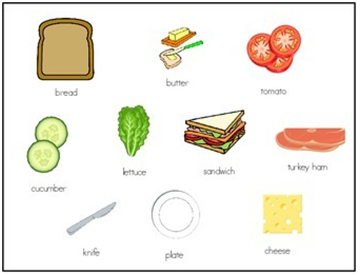
|
|
Arts
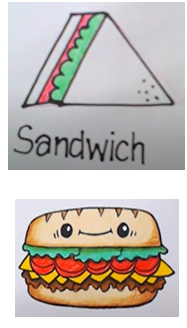
- Draw a realistic sandwich. Follow the link and copy the video on how to draw a sandwich.
- Draw a funny sandwich. Follow the link and copy the video on how to draw a funny sandwich. Remember you do not have to follow the video exactly. You can be creative and change what you want.
-
- Act out the story of Carla’s sandwich. Get your family involved. Take turns being different characters in the story and acting parts out.
|
|
Health and Wellbeing
- Create a healthy sandwich. First think about ingredients that are heathy and not healthy to put in a sandwich. Plan your sandwich. Write down what ingredients you need (bread, salad) and the tools you need (butter knife, plate). After, make your healthy sandwich with an adult.
- Write a recipe for your healthy sandwich and send it to the school twitter page. We would love to see it!
|
|
Maths

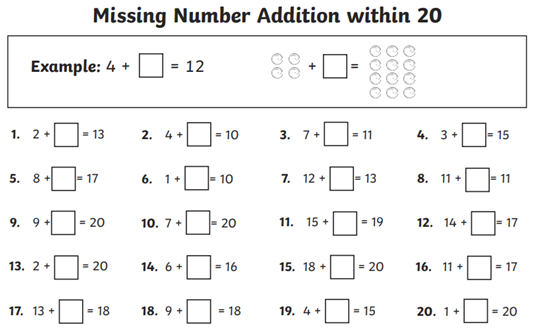
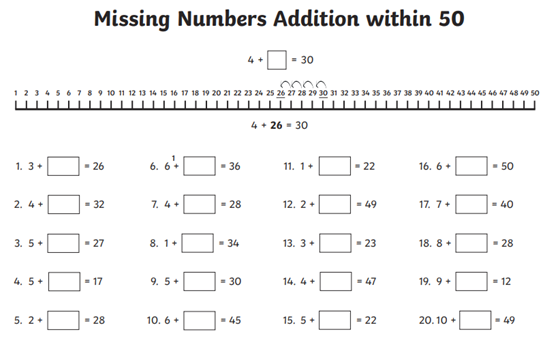
.png)
|
Home Learning Activities – 4th May 2020
|

Story of the week
The Case of the Missing Carrot Cake
|
|
Spelling sound – a magic e (when short vowel sound becomes a long vowel sound with addition of ‘e’ at the end of the word)
- cake
- bake
- late
- hate
- care
- Grid activity: draw a picture of each word and write it in a sentence. Challenge – add some bling to your sentences (adjectives, time words, connectives)
- Board game: take turns reading and marking an ‘ie’ word. The first person to colour 4 words in a row wins. (To play on a phone or tablet, save the picture, press edit and colour the words to mark the turns)
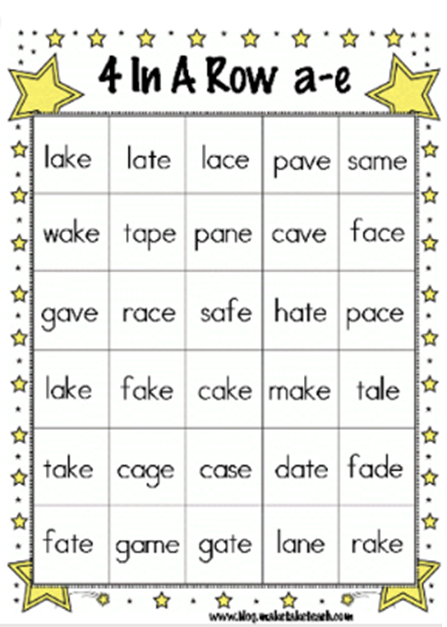
- Active spelling activities
  
|
- Predict: before you read the book, predict what you think will happen in the book. Write it down or tell your family. Remember to explain why you think something, use the words “I think ___________________________ because”
- Quiz. Test how well you can remember facts about the story and play the quiz online.
https://quizizz.com/join/quiz/5eafd7d6f23404001d160252/start?referrer=5e7cc0d77578eb001b4cb002
- Make up your own questions. Try making open questions that can have any answer, or closed questions that can only be answered with a yes or no.
|
|
- Write a review: write your opinion of the story. *Remember to explain why you think something using the word because.
I liked the book because ___________________________.
- Write a summary: tell us what happens at the start, middle and end of the story? Remember summaries must be short and only talk about the really important events.
|
|
Arts
- Draw the characters in the story. For example Detective Wilcox, Captain Griswald, or Miss Rabbit.
.png)
- Draw yourself as a detective.
- Dress up as a detective and solve mysteries in your own house.
|
|
Health and Wellbeing
- Carrots are healthy vegetables. Can you list other vegetables?
- Can you list some healthy fruit?
- Research - what is the difference between fruit and vegetables?
- If carrots are healthy, do you think carrot cake is healthy for our bodies? Explain your answer.
- Can you think of other desserts that have food in it but are not healthy?
- Can you make a healthy dessert or snack that has fruit in it? Remember we made snowmen kebabs, you can try those again!
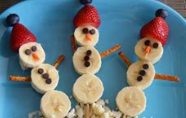
|
|
- Compare the size of different footprints. Detective Wilcox makes small mouse footprints like this.
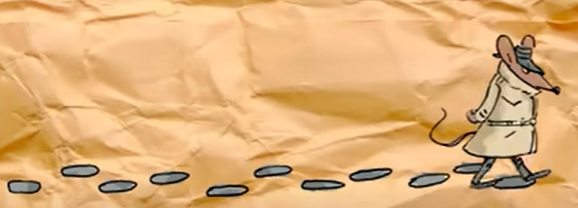
Draw around your own feet. How big are your footprints?
Draw around your family members. Compare their sizes to you.
Research different animals, like dinosaurs. What size footprints do they make?
- Find the coordinates. Detective Wilcox is at the coordinates (0,0). Tell him the coordinates of everyone he needs to investigate about the missing carrot.
|
Home Learning Activities 27th April 2020
|
Story of the week
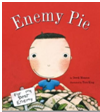
Enemy Pie: https://www.youtube.com/watch?v=b_I9NgXKtC8 ?
|
|
Spelling sound – ‘ie’ that makes the long vowel I sound
- pie
- lie
- tie
- cried
- fried
- Grid activity: draw a picture of each word and write it in a sentence. Challenge – add some bling to your sentences (adjectives, time words, connectives)
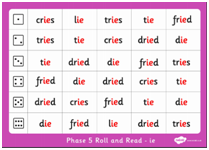
- Board game: take turns reading and marking an ‘ie’ word. The first person to colour 4 words in a row wins. (can save the picture, press edit and colour the words to play on a phone or tablet).

|
|
Reading
- Predict: before you read the book, predict what you think will happen in the book. Write it down or tell your family. Remember to explain why you think something, use the words “I think ___________________________ because”
- Quiz. Test how well you can remember facts about the story and play the quiz online.
https://quizizz.com/join/quiz/5ea5e308c67622001b70df69/start?referrer=5e7cc0d77578eb001b4cb002
- Make up your own questions. Try making open questions that can have any answer, or closed questions that can only be answered with a yes or no.
|
|
Writing
- Write a review: write your opinion of the story. *Remember to explain why you think something using the word because.
I liked the book because ___________________________.
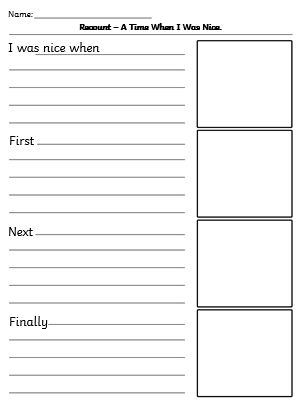
- Write a recount: the story showed us it’s good to be nice and we might make a friend doing so. Write about a time that you were nice to someone. Remember to use time words like first, then, next, finally. Make your story long. Give us lots of detail about what you did. Use adjectives to describe things. A soft ball or green grass.
|
|
Arts
- Design your own tree house. What would it look like on the outside and inside? What would you put inside the tree house? We would love to see your drawings. Ask an adult at home to take a picture of it and send it to our schools twitter account.
Some ideas to get you started.


|
|
Health and Wellbeing
- Ask an adult if you can make a pie together at home. Remember to clean your hands, surfaces and tools you will use to make your pie. Roll up your sleeves and tie back your hair.
- If you can’t make a pie, try buying one and tasting it.
- Write about if you liked or disliked the pie, and explain why.
- Write a recipe for a pie if you made it, or, read a recipe for a pie.
- Think about the ingredients in a pie. Where do they come from? Remember we learned that eggs comes from hens and flour comes from wheat.

|
|
- Halves and quarters worksheet. Colour all the pies that have been cut into equal parts red, and all the pies that have been cut in to 4 equal parts blue.
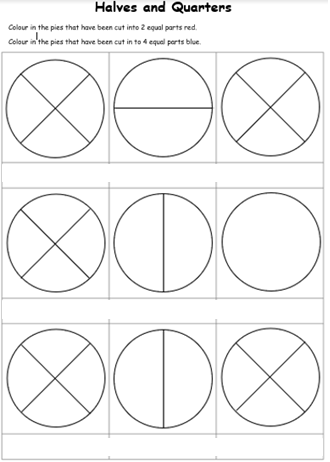
|
Try some previous activities
|
Story of the week
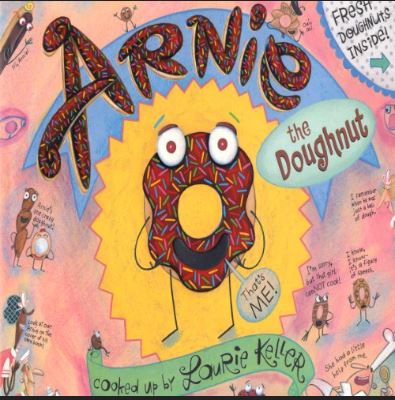
Arnie the Doughnut
|
|
Spelling sound – ‘ou’ like round
- out
- loud
- round
- sound
- ground
- Grid activity: draw a picture of each word and write it in a sentence.
Challenge – add some bling to your sentences (adjectives, time words, connectives)
- Board game: take turns reading and marking an ‘ou’ word. The first person to colour 4 words in a row wins. (can save the picture, press edit and colour the words to play on a phone or tablet).

Active spelling activities
 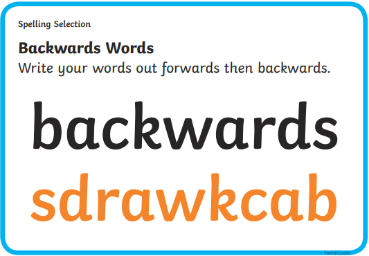
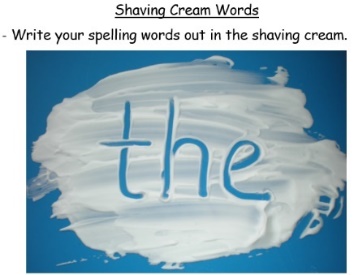
|
|
Reading
- Predict: before you read the book, predict what you think will happen in the book. Write it down or tell your family. Remember to explain why you think something, use the words “I think ___________________________ because”
- Try the true/false/can’t tell quiz online.
https://quizizz.com/join/quiz/5e98653a77da25001bfc784a/start?from=soloLinkShare
- Make up your own true/false or can’t tell questions about Arnie the Doughnut and ask your family.
|
|
Writing
- Write a review: write your opinion of the story. *Remember to explain why you think something using the word because.
I liked the book because ___________________________.
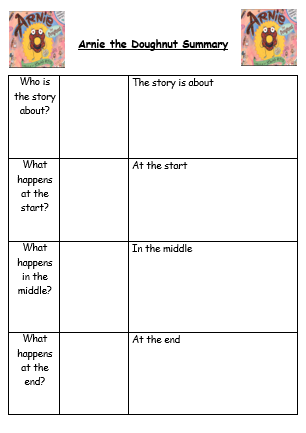
- Write a summary of the story. Remember to write:
- Who the story is about.
- What happened first in the story.
- What happened in the middle.
- What happened at the end.
- Use time words like first, then, lastly.
- Write down as many words that rhyme with doughnut as you can. Remember it must end with ut.
- hut
- but
|
|
Arts
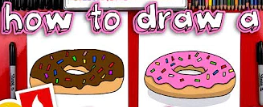
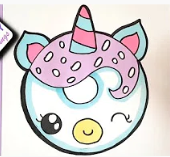
- Act out the story of Arnie the Doughnut
- Put on voices like the man telling the story!
- You can even make your own costumes.
|
|
Health and Wellbeing
- List all the different ways Arnie felt throughout the story.
- Pretend you are a round doughnut and roll in different ways!
- Remember you can do a forward roll, backwards roll, sausage roll and more!
- Put your rolls in a sequence. First do a sausage roll, then do 2 forward rolls and so on. Make it as simple or complicated as you want!
|
|
Maths
- Fill in the missing numbers in the doughnuts.
- Skip count in 2’s.
- Skip count in 3’s
- Skip count in 5’s.
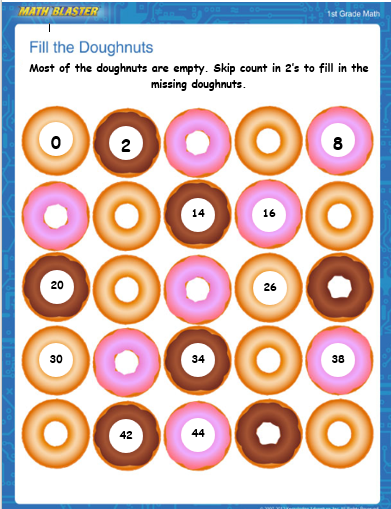 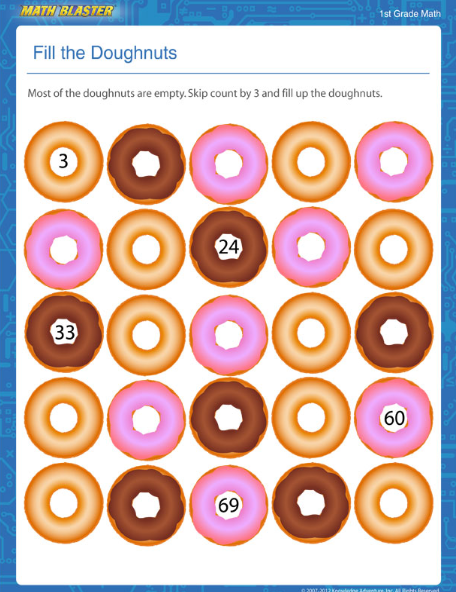 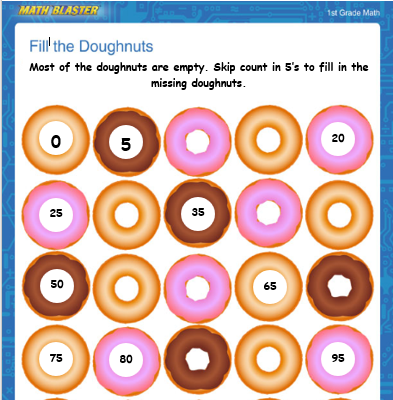
- Tackle some doughnut word problems.
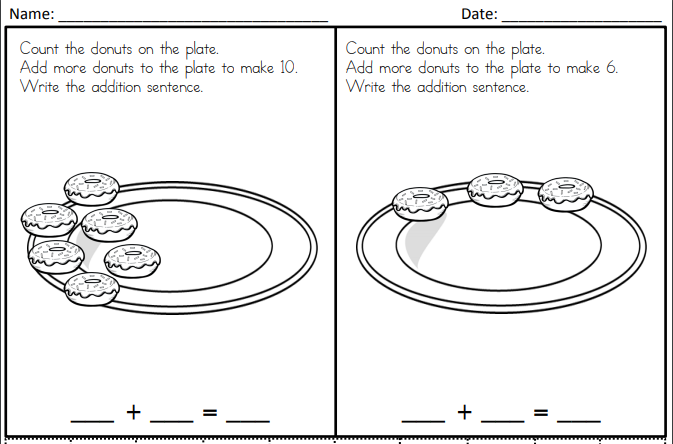
|
Try some previous activities
|
Story of the week
Watch the Shark in the Dark video.
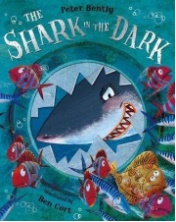
|
- Spelling sound – ‘sh’ for shark
- Shark
- Shop
- Ship
- Shed
- Shut
- Grid activity: draw a picture of each word and write it in a sentence.
Challenge – add some bling to your sentences (adjectives, time words, connectives)
- Board game: take turns reading and marking an ‘ow’ word. The first person to colour 4 words in a row wins. (can save the picture, press edit and colour the words to play on a phone or tablet).
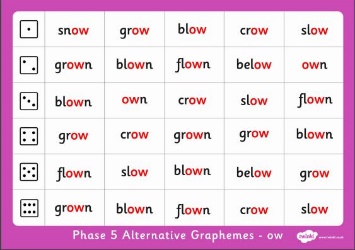
- Active spelling activities
  
|
|
Reading
- Predict: before you read the book, predict what you think will happen in the book. Write it down or tell your family. Remember to explain why you think something, use the words
“I think ___________________________ because”
- True/false/can’t tell quiz.
Click here to play
|
|
Writing
- Write a review: write your opinion of the story. *Remember to explain why you think something using the word because.
I liked the book because ___________________________.
- Write what happens next in the story
-
- Who? Who is in the story
- What? What happens at the start, middle and end. Remember the middle should have a problem or interesting event, and it gets solved at the end.
- Where? Where is the story happening?
- When? When is it all happening?
|
|
Arts
- Learn and perform ‘Baby Shark’.
- Make your own shark song and actions.
- Make up your own shark story and record it.
|
|
Health and Wellbeing
|
|
- Draw the other side of symmetry for these sea animals. Remember, whatever is on one side, you need to flip it and draw it on the other side.
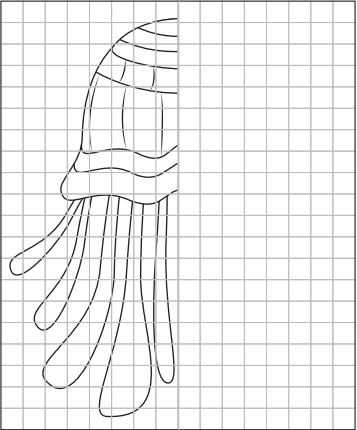 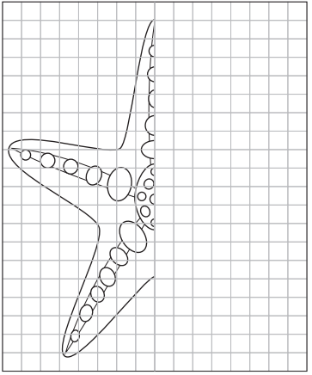
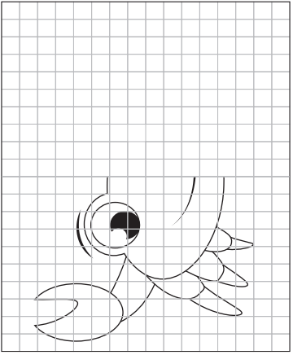 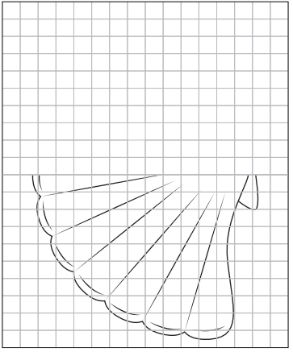
|
Check out more of our favourite activities below:
Spelling and grammar
Spelling/Phonics
Grammar
Sight words (words that come up all the time when reading and writing)
Reading
Reading
Stories to read online, including our favourites!
Short Movies with a Message
Maths
*So far, we have been working with numbers to 100 so keep this in mind when choosing levels for games.
Estimation
Counting and ordering numbers
Addition and Subtraction
Money
Time
Pattern
Shape
Coordinates
Jack Hartmann
P.E
Art
Science
Back to ALL HOME LEARNING ACTIVITIES